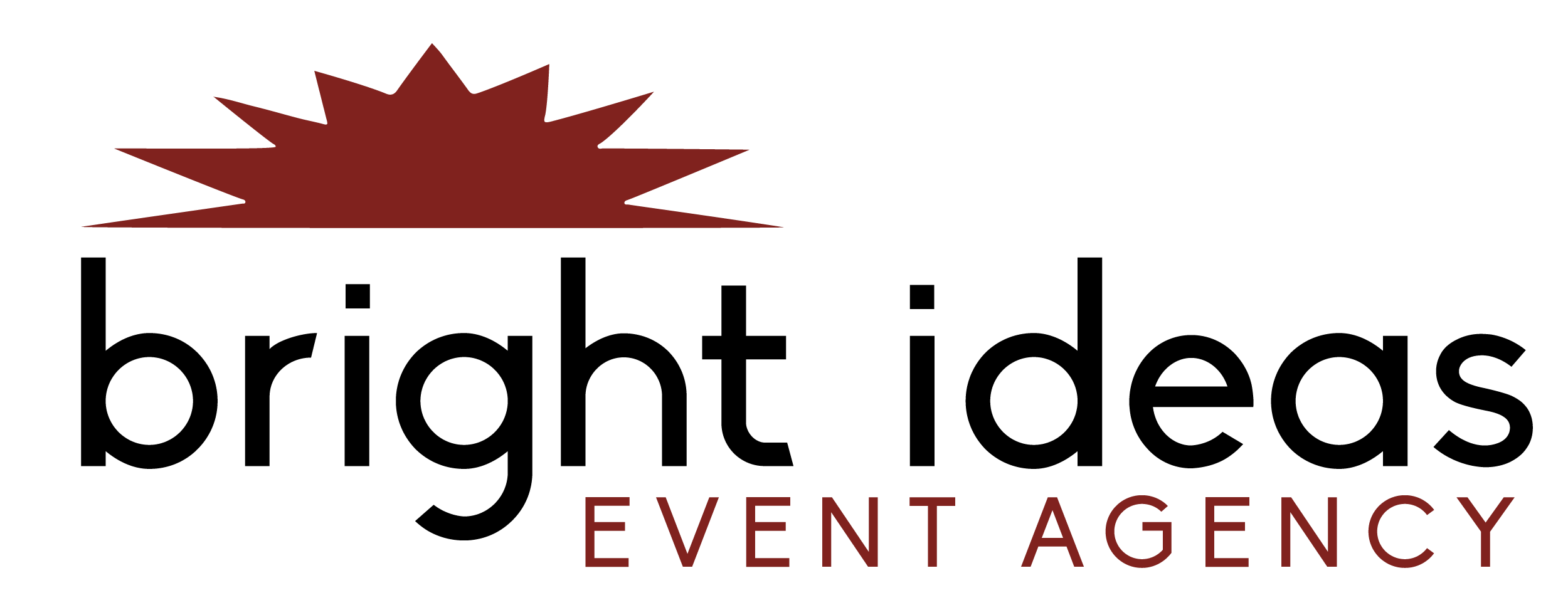by CEO & Founder, Sharon Bonner
We start the 2020 Summer Event Study Series off with one of my favorite words. Resilience. To me personally it means the ability to do anything. Never giving up. Always pushing through.
The Beginning
In 1988, I had boxes and boxes of resilience. It was the birth of Bright Ideas. Believe me it has been quite a journey, so let me begin by telling you how it all started 32 years ago.
I have been asked a million times (well not really, but it seems like it) about the kind of schooling or experience I have. What would you think if I said I had neither? I started my first business when I was a young girl of 8 years old and sold my first business when I was 18 years old. Neither of them had anything to do with event planning. They both had a common denominator though; I was resilient. I never gave up. EVER. When my parents told me at 17 years old that I would never build a business to sell, I didn’t listen. And good for me that I didn’t. I think they were both amazed that I actually got someone to buy my promotional company two years after I started it.
Back to the fall of 1988. I was studying business at Simon Fraser University, majoring in marketing and in my spare time I played mixed slow-pitch with friends. My girlfriend on the team asked me to help her write a business plan for a new business idea she had. She had recognized a need in the marketplace for someone to plan events for corporations in the Metro Vancouver area.
The Birth of Bright Ideas
After helping her write the business plan, I became intrigued in the whole concept of event planning, so we became partners, as this business of event planning sounded like such fun. Now we were a team! The first thing we did was market research to find out exactly what corporations in Vancouver were planning. Believe it or not, I still have these forms in the BI archives.
In our first year of business the most frequently requested corporate events were Golf Tournaments, Boat Cruises, and Company Picnics. In addition, we managed to coordinate a few Weddings and Private Parties. We were trying everything and anything to get experience and bring in some revenue. We also tried our hand at public events, such as the Downtown Economic Development Society (D.E.E.D.S.) trade show, which offered young entrepreneurs on Vancouver’s East Side an opportunity to promote their business. This was so good for us. Here we were, a new company ourselves and we were putting on a trade show for young entrepreneurs just like us! The trade show was very successful and gave us the confidence to continue planning events.
We chartered boats and sold tickets to the public for such cruise events as Oktoberfest, Symphony of Fire, and the Carol Ships. We even tried our hand at selling pizza during the First Night New Years’ Celebration. We were all over the place. We learned a lot this first year and resilience played a huge part. It allowed us to lay a solid foundation for the next three decades of event planning. We never gave up. When we were knocked down, we got back up and kept going forward.
Over next 30 years, our business would see many highs and lows and being resilient was so important. We experienced SARS in 2003, the economic crash in 2008, the H1N1 pandemic in 2009, the Vancouver Winter Olympics in 2010, the recession in 2015 and now we have the Coronavirus in 2019/2020.
Building resilience in times of business uncertainty is key as is outlined in this article from RSA in the USA.
Building Business Resilience
Organizations are complex and interrelated organizations today represent a complex and continually evolving tapestry of products, services, processes, technologies, employees, third parties and more. Each of these components adds complexity to a business and magnifies its fragility—especially when something goes wrong. If your organization is pursuing digital transformation, there’s a very good chance that something will go wrong, whether it’s a technology outage, a cyberattack or a wholly unexpected event.
Resources Are Limited Resiliency and recovery can be expensive, so it’s important to prioritize the processes, systems, people and other resources that are most critical to your business. In the event of a disruption, you want to restore these areas as quickly as possible. Business Recovery Is Not Enough. The more complex your business and the more intricate your extended ecosystem, the harder it is to maintain operations in the face of disruption. Complexity also makes it more difficult to see where resiliency risks lie, where they are emerging, and at what speed they could affect your organization. Business and IT recovery plans can go a long way toward ensuring that critical functions can continue to operate or be recovered, but recovery may not be enough. Proactive resiliency measures should be the goal.
Four Steps to Resilience
Here are four steps to coordinate business resiliency.
STEP 1: DETERMINE BUSINESS CONTEXT & PRIORITIES
Establishing business context means identifying the most important parts of your business so you can build resilience into them before a disruption occurs. A business impact analysis (BIA) exercise can help you determine which business processes are most critical.
STEP 2: COORDINATE BUSINESS CONTINUITY & IT RECOVERY PLANNING
Business continuity and IT recovery teams that work independently of each other are unlikely to have full visibility into resiliency risks across an organization. Lack of coordination between these two teams makes it harder for them to develop adequate recovery plans and resiliency procedures.
STEP 3: COORDINATE INCIDENT & CRISIS RESPONSE
A flat tire on a delivery truck. A customer who falls on a slippery floor. A hushed call to a whistleblower hotline. These kinds of incidents occur often enough inside companies to merit standard procedures for handling them efficiently and effectively. But what happens when standard incident response procedures aren’t enough and an incident develops into a crisis? Does your incident response team know when to engage crisis responders? This handoff is critical, and if it doesn’t happen at the right time and in the right way, it can worsen the crisis. That’s why coordination between incident and crisis response is absolutely essential to resiliency.
STEP 4: ADAPT YOUR RESILIENCY PROGRAM
Resilient organizations not only implement plans to recover from different types of disruption; they also build resiliency into the fabric of their processes, systems and infrastructure. That means identifying single points of failure—like the one facility that manufactures a key part for your product—and implementing back-up plans so that a failure at that site doesn’t grind production to a halt. Successful business resiliency programs coordinate business priorities, business continuity planning, IT disaster recovery planning, crisis planning and incident response activities, and align these activities with business strategies and objectives.
Photos: https://brightideasevents.com/project/british-secret-garden/
Case Study: https://brightideasevents.com/news/case-studies/case-study-in-resilience/
Video: https://www.youtube.com/watch?v=L3OrYoOOJEM&t=1s
~~
You might also enjoy reading the following blogs:
Event Consulting for LIVE or Virtual Events











